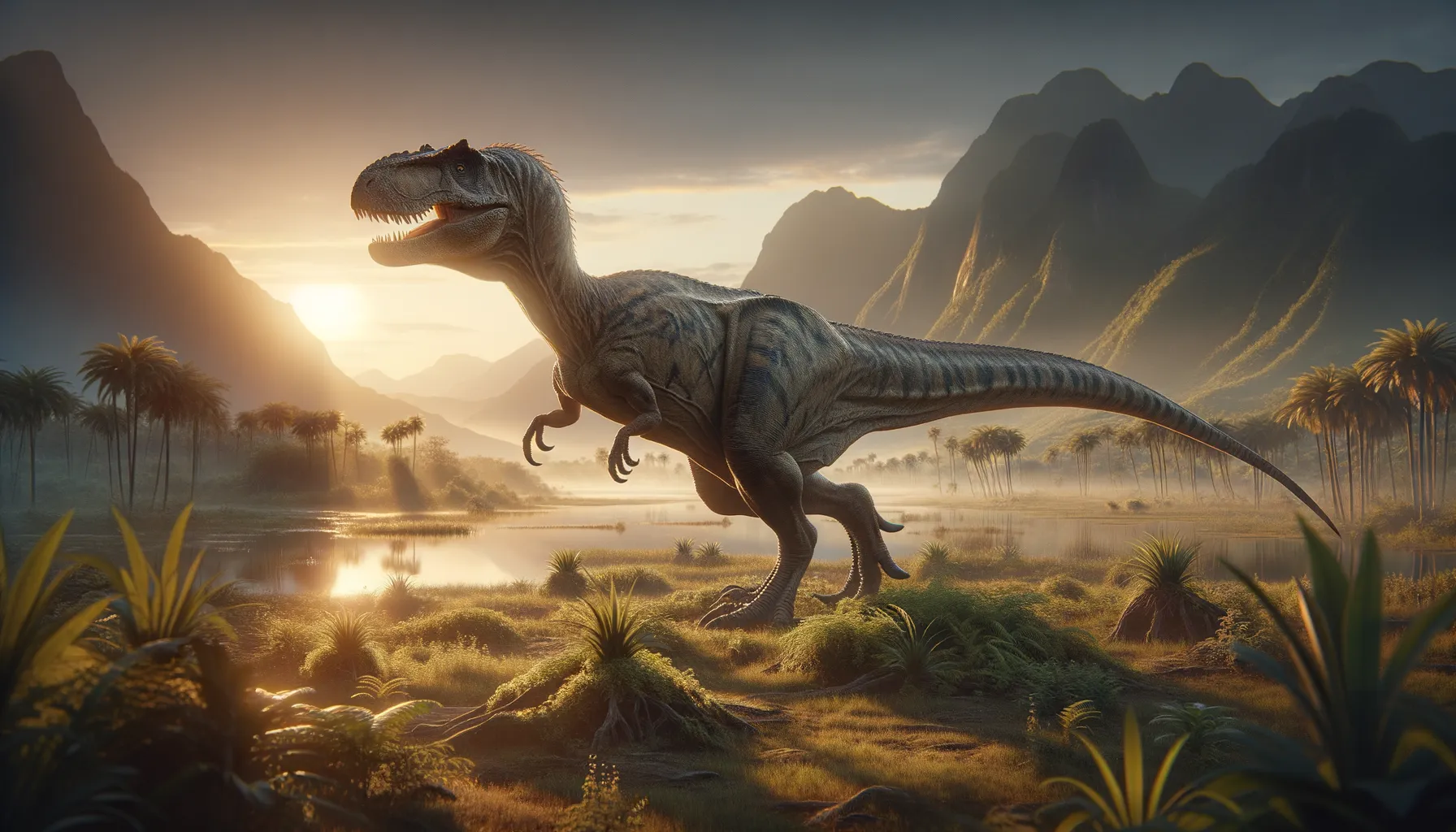
Arkharavia
A link between ancient lands and times.
Period
Cretaceous
Length
Around 7 to 8 meters long.
Height
Roughly 3 meters tall at the hips.
Weight
Approximately 1 to 2 tons.
Arkharavia was a medium-sized dinosaur that roamed the earth during the Late Cretaceous period. First discovered in the Russian Far East, it was a theropod with features similar to both Asian and North American species. Its discovery provided valuable insights into the diversity and distribution of dinosaurs in ancient ecosystems, highlighting the connections between continents during this era.
Diet
Arkharavia was primarily carnivorous, preying on smaller animals and possibly scavenging. Its diet likely consisted of smaller vertebrates and other available meat sources in its environment.
Hunting
As a theropod, Arkharavia may have relied on stealth and speed to catch prey. Its hunting techniques might have included ambush tactics or chasing down slower animals.
Environmental challenges
Arkharavia lived in a time of significant geological and climate changes. It faced challenges such as shifting continents, which altered habitats and available resources. Adaptations were necessary for survival, as these changes affected prey availability and competition with other predators.
Speed
Moderate speed, similar to other theropods.
Lifespan
Estimated to be around 20 to 30 years.
First discovery
First discovered in the Far Eastern region of Russia.
Fun Facts
- Arkharavia was a dinosaur that lived during the Late Cretaceous period, over 70 million years ago.
- It is known from fossils found in what is now Far Eastern Russia, close to the Amur River.
- Arkharavia is believed to have been a type of sauropod, which means it was likely a large, long-necked herbivore.
- The fossils of Arkharavia suggest it might have been related to the more famous sauropods like Brachiosaurus, but with its own unique characteristics.
- Because only limited fossils have been found, much about Arkharavia remains a mystery, making it a tantalizing puzzle for paleontologists.
- The name Arkharavia is derived from the Arkhara locality, the place where its fossils were first discovered.
- Despite its elusive nature, Arkharavia helps scientists learn more about the diversity of dinosaur species in Asia during the Late Cretaceous period.
Growth and Development
Arkharavia likely experienced rapid growth phases during its early life. Juveniles may have had different diet needs compared to adults, transitioning from small prey to larger animals as they grew. This growth required efficient energy use and adaptations to environmental resource availability.
Habitat
This dinosaur lived in varied environments, from coastal regions to inland areas with forests and plains. Its habitat was rich in biodiversity, providing ample prey and shelter. Seasonal variations may have impacted its feeding and migration patterns.
Interaction with other species
Arkharavia likely coexisted with other theropods, as well as herbivorous dinosaurs. It may have had to compete for food resources, with some interactions leading to conflict. There may have also been instances of symbiosis or avoidance between species to reduce competition.
Natural lifespan
Its natural lifespan likely spanned 20 to 30 years under typical conditions.
Reproduction
Reproduction would have been similar to other theropods, involving egg laying. Nesting sites might have been chosen for safety from predators and environmental conditions. Parental care, if any, is speculative but may have involved guarding eggs or young.
Social behaviour
Arkharavia's social behavior is not well-documented, but it may have lived solitary or in small groups. Social interactions would depend on resource availability and environmental pressures. Group hunting or cooperative behaviors could have been beneficial in areas with larger prey.
Fossil locations
Fossils of Arkharavia have primarily been found in the Amur Region of Russia. These sites provide important evidence of its existence and contribute to our understanding of dinosaur distribution in Asia. Paleontologists continue to study these areas to unearth more about its ecology and behavior.
